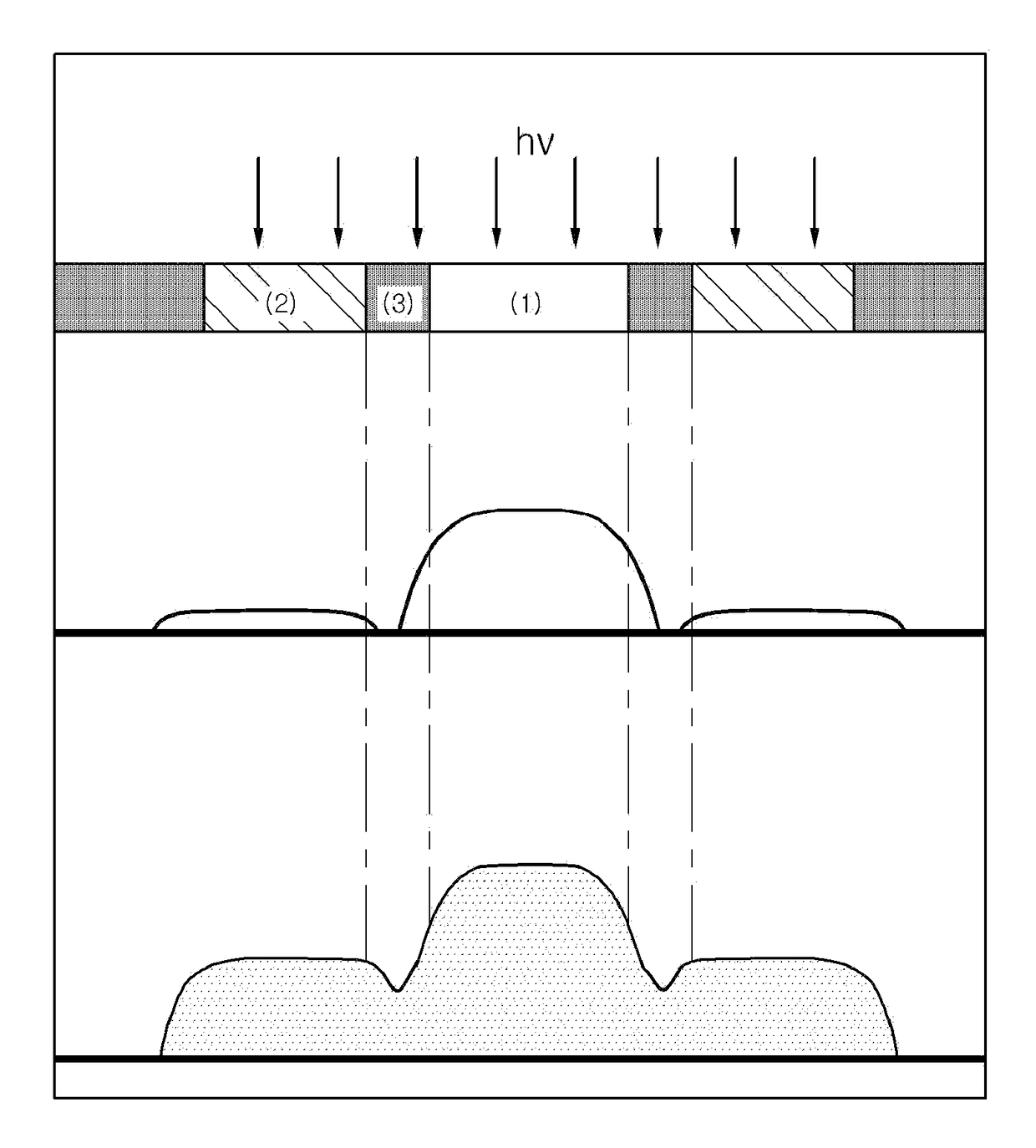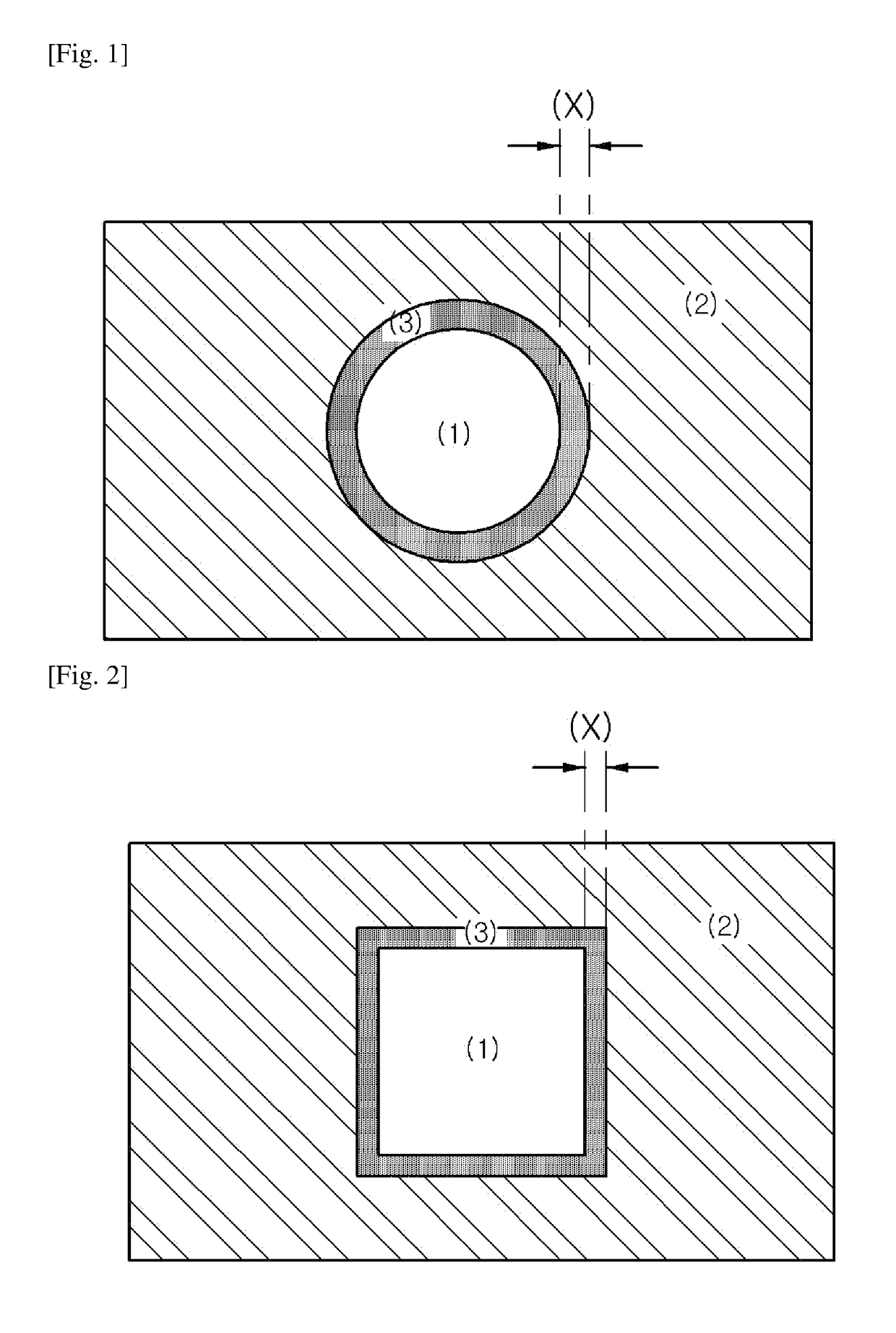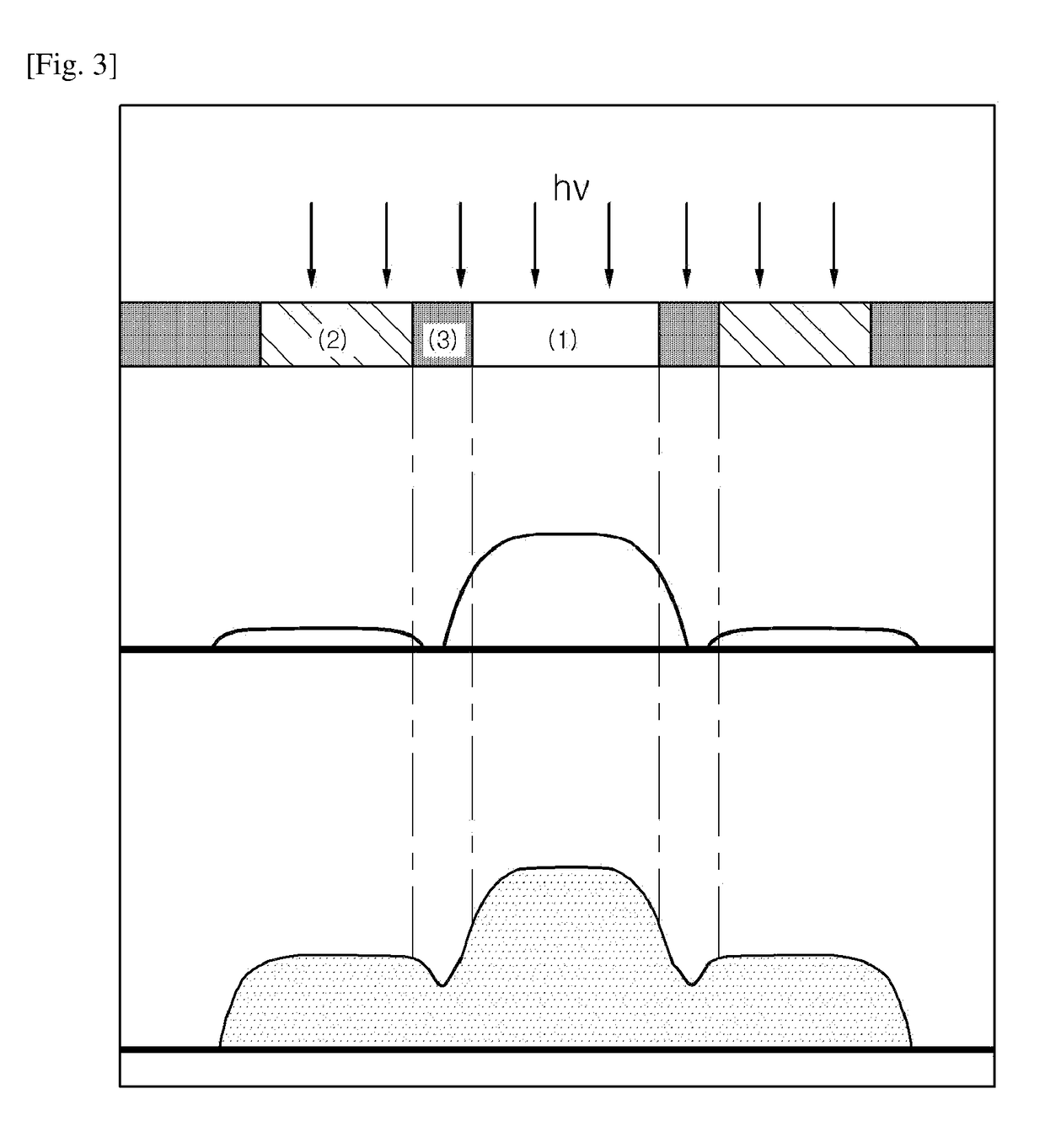Method for preparing column spacer
a column spacer and spacer technology, applied in the field of preparing a column spacer, can solve the problems of spatially non-uniform luminance defects, difficult to achieve fine patterns, and not substantially sharp, and achieve the effect of simple and efficient manufacturing and reduction of the critical dimension of the spacer
- Summary
- Abstract
- Description
- Claims
- Application Information
AI Technical Summary
Benefits of technology
Problems solved by technology
Method used
Image
Examples
preparation example 1
mer
[0147]To a 500 mL, round-bottomed flask equipped with a refluxing condenser and a stirrer, 100 g of a monomer mixture having the component ratio of 51 mole % of N-phenylmaleimide, 4 mole % of styrene, 10 mole % of 4-hydroxybutylacrylate glycidyl ether, and 35 mole % of methacrylic acid, 300 g of PGMEA as a solvent, and 2 g of 2,2′-azobis(2,4-dimethylvaleronitrile) as a radical polymerization initiator were added. Then, the reaction temperature was increased to 70° C. and the reaction mixture was stirred for 5 hours to obtain a copolymer having the solid content of 31 wt %. The copolymer thus prepared had an acid value of 100 mgKOH / g and a polystyrene-referenced weight average molecular weight (Mw) measured by gel permeation chromatography of 20,000.
preparation example 2
Epoxy Resin Compound Having Cardo Backbone Structure
[0148]
Step (1): Preparation of 9,9-bis[4-(glycidyloxy)phenyl]fluorene
[0149]To a 3,000 mL three-neck round-bottom flask, 200 g of toluene, 125.4 g of 4,4′-(9-fluorenylidene)diphenol and 78.6 g of epichlorohydrin were added, and heated to 40° C. with stirring to obtain a solution. 0.1386 g of t-butylammonium bromide and a 50% NaOH aqueous solution (3 eq) were mixed in a vessel and the mixture was slowly added to the resulting solution with stirring.
[0150]The reaction mixture thus obtained was heated to 90° C. for 1 hour to remove 4,4′-(9-fluorenylidene)diphenol completely, which was confirmed by HPLC or TLC. The reaction mixture was cooled to 30° C., and 400 mL of dichloromethane and 300 mL of 1N HCl were added thereto with stirring. Then, the organic layer was separated, washed with 300 mL of distilled water twice or three times, dried over magnesium sulfate, and distilled under a reduced pressure to remove dichloromethane. The resu...
preparation example 3
d Dispersion
[0153]8 g of the copolymer obtained in Preparation Example 1 above, 8 g of a polymer dispersing agent (DISPERBYK-2000, BYK Co.), 12 g of carbon black, 53 g of lactam black (Black 582, BASF Co.) as an organic black, 16 g of C.I. Pigment Blue 15:6, and 384 g of PGMEA as a solvent were dispersed at room temperature for 6 hours using a paint shaker. This dispersing step was performed with 0.3 mm zirconia beads. Upon completion of the dispersing step, the beads were separated from the dispersion using a filter, thereby producing a colored dispersion having a solid content of 23 wt %.
PUM
 Login to View More
Login to View More Abstract
Description
Claims
Application Information
 Login to View More
Login to View More - R&D Engineer
- R&D Manager
- IP Professional
- Industry Leading Data Capabilities
- Powerful AI technology
- Patent DNA Extraction
Browse by: Latest US Patents, China's latest patents, Technical Efficacy Thesaurus, Application Domain, Technology Topic, Popular Technical Reports.
© 2024 PatSnap. All rights reserved.Legal|Privacy policy|Modern Slavery Act Transparency Statement|Sitemap|About US| Contact US: help@patsnap.com










